Meetings and Events
Webinar on European Winter Maintenance Practices
The Transportation Research Board will hold a webinar February 29 at 2 pm Eastern Time examining how transportation organizations in Europe deal with winter maintenance challenges in their countries. Specific topics that will be addressed are managing winter service in Scotland’s unpredictable climate, winter maintenance chemicals and application strategies used in Norway, and new methods for slush removal. Details.
[divider]
International Conference and Workshop on Winter Maintenance and Surface Transportation Weather
The Transportation Research Board’s Committees on Winter Maintenance and Surface Transportation Weather are organizing a joint conference of the Ninth International Symposium on Snow Removal and Ice Control Technology and the Sixth National Conference on Surface Transportation Weather. The conference will be held online, with presentations recorded in February 2016 and available on-demand after. An in-person workshop will be held in Fort Collins, Colorado April 25-27. Details.
[divider]
![]() North American Snow Conference
North American Snow Conference
The American Public Works Association will hold the 2016 North American Snow Conference May 22-25 in Hartford, Connecticut. More than 1,500 snow fighters are expected to attend the event, which will include an exhibit floor with expanded hours over previous years, educational programs, technical tours, networking opportunities and the Exhibitor Solutions Theater—technical sessions presented by exhibitors to show how their technologies or services address snowfighting needs. Details.
[divider]
 PWX Public Works Expo
PWX Public Works Expo
The American Public Works Association will rebrand its International Public Works Congress and Exposition as PWX at its next meeting in Minneapolis August 28-31. APWA says the Expo will include more technology, cater to a variety of learning styles, and encourage cross-generational dialogue to engage all generations in the public works profession. The meeting will include more than 125 technical and professional development sessions, a 90,000-square-foot exhibit floor, additional interviews with session speakers, and a variety of networking opportunities. Details.
[divider]
News
 Pew Charitable Trusts Reviews State Snowfighting Efforts
Pew Charitable Trusts Reviews State Snowfighting Efforts
The Pew Charitable Trusts’ Stateline newsletter highlighted how states are taking a proactive approach to their snowfighting efforts. The report discussed innovative technologies, including road weather information systems, sophisticated material tracking systems, plow-tracking networks, and efforts to reduce the amount of deicers used by applying them efficiently. Details.
[divider]
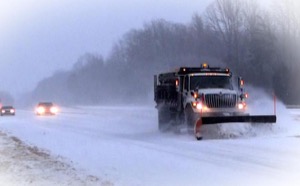 Michigan Tests GPS Plow Trackers
Michigan Tests GPS Plow Trackers
Michigan DOT has installed GPS trackers on about 80 snowplows in its Southwest region as a test of the technology. The trackers will allow residents to view where the trucks are on the state’s Mi Drive travel information website. The DOT anticipates that information will help give motorists better information about road conditions and help to better manage plowing operations. Details.
[divider]
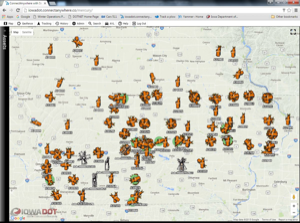 Iowa Upgrades GPS/AVL System
Iowa Upgrades GPS/AVL System
After a small test last year, Iowa DOT is upgrading the GPS/AVL system on 520 of its more than 900 snowplows this year. Data from the trucks had previously been transmitted to the garage via a cellular connection, but some areas had unreliable connections. The new system will turn the trucks into Wi-Fi hotspots that rely on a different cellular provider, which improved reliability in tests. IDOT’s plow camera data will also be carried by the GPS/AVL cellular provider, which the state hopes will reduce costs over having a separate provider for it. Details.
[divider]
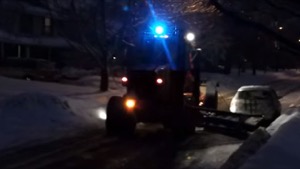 Agencies Consider New Plow Light Colors
Agencies Consider New Plow Light Colors
Saskatchewan added blue flashing lights to its snowplows, beginning in January, according to a CBC News report. Saskatchewan requires drivers to slow to 60 kilometers per hour when near snowplowing operations. The blue lights are intended to reduce confusion about whether a plow is actively clearing snow or just driving. Plows previously used amber lights as “over width” indicators. They will continue to use amber lights when the plows are driving, but flashing blue lights will indicate that plowing is taking place. The Associated Press reported that Idaho changed the rear lights on its snowplows from flashing yellow to flashing red three years ago. The Idaho Transportation Department said that change has reduced the number of collisions when motorists hit plows from behind. Details: Saskatchewan. Idaho.
[divider]
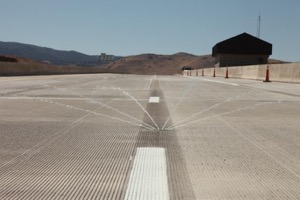 Nevada Installs Automated Deicer Sprayer
Nevada Installs Automated Deicer Sprayer
A KOLO-TV report highlighted automatic deicer sprayers that NDOT has installed on four bridges on I-580 between Reno and Carson City. The system relies on atmospheric and road sensors that will automatically spray deicers under appropriate conditions. NDOT says the system is more efficient than calling out a snowplow to apply deicers, and that the technology has been proven to reduce accidents. Details.
[divider]
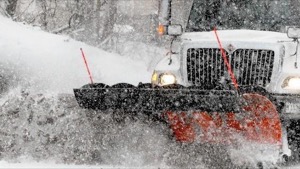 Illinois Village Creates Plow Ride-Along Program
Illinois Village Creates Plow Ride-Along Program
Hampshire, Illinois, has created a program in which village residents over 18 can ride along with a snowplow driver during a winter storm. The Village hopes that the program will provide positive outreach for residents to better understand what plow drivers do. It is modeled on a similar program in Kane County, Illinois. All participants need to be approved by the village streets supervisor, obey several safety rules, and attend an orientation. Details.
[divider]
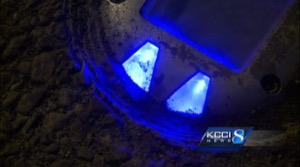 Iowa Tests Slick Road Sensor
Iowa Tests Slick Road Sensor
Iowa DOT is believed to be conducting the first U.S. test of the PATeye warning system, a small sensor that alerts drivers with a blue flashing light if ice is forming on pavement. IDOT has installed two of the sensors in one of its parking lots in Ames, according to a KCCI-TV report. The sensors are intended to activate the lights when the temperature is below 32 degrees and there is moisture present. In initial tests, the lights have flashed too often, including when there is no water that could form ice, although development is continuing. Details.
[divider]
Research Reports
 Roadway Salt Best Management Practices
Roadway Salt Best Management Practices
Clear Roads Report 14-10
This project developed an easy-to-use guide to best management practices in the procurement, storage, and application of road salt. Each best management practice is described on a single page, front and back, so it can be separated from the manual and shared with relevant personnel or placed in a break room so staff can review and consider it in easily digestible chunks. Report.
[divider]
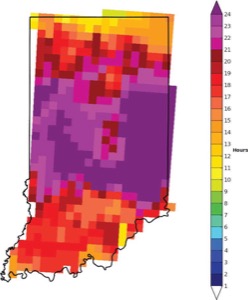 Road Weather Severity Based on Environmental Energy
Road Weather Severity Based on Environmental Energy
Joint Transportation Research Program Report 2015/13
Indiana DOT currently uses estimates of winter weather hours to quantify the severity of winter weather. However, this definition does not take into account factors such as precipitation rate, wind speed, and availability of sunshine that can affect road conditions and the effort needed for treatment. This project developed The Road Weather Severity Based on Environmental Energy index to evaluate the amount of energy necessary to clear roads, in order to more accurately and effectively evaluate winter maintenance performance. Report.
[divider]
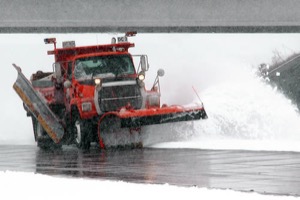 Automatically Measuring Traffic Recovery Times After Snowstorms
Automatically Measuring Traffic Recovery Times After Snowstorms
Minnesota DOT Report 2015-44
Performance of winter maintenance operations in Minnesota and most other states is generally measured by “time to bare pavement”—the length of time between the end of the storm and the road being clear of snow and ice. Visual observation is the typical method for determining this, but it introduces the potential for error or lag time in reporting. This project developed a process to calculate the normal condition regain time, an alternative performance measure based on the observed relationship between traffic speed and traffic density. Researchers also developed prototype software to calculate the normal condition regain time automatically based on data collected by loop detectors. Preliminary tests suggest that this method would have a higher level of accuracy than manual observation. Report.
[divider]
 Performance Evaluation of Snow and Ice Plows
Performance Evaluation of Snow and Ice Plows
Illinois DOT Report ICT-15-007
This project investigated the performance of several common types of plow blades. The project involved a literature review, synthesis of best practices in snow and ice plowing operations, development of a blade performance evaluation procedure, field tests of stresses using an instrumented snow plow, and development of finite element models to develop a performance database. Plow stresses generally do not exceed 10,000 psi, but were higher when plowing concrete pavements than asphalt pavements. Use of the blade-saver option was found to reduce stresses in the plow and on the carrier structure. Report.
[divider]
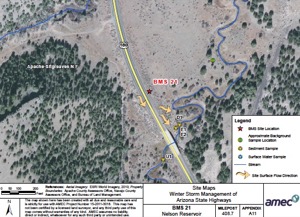 Development of ADOT Application Rate Guidelines for Winter Storm Management of Chemical Additives through an Ambient Monitoring System
Development of ADOT Application Rate Guidelines for Winter Storm Management of Chemical Additives through an Ambient Monitoring System
Arizona DOT Report 15-691
Arizona DOT’s Winter Storm Management Operations Manual presents guidelines for the application of anti-icing and deicing agents based on specific storm events and roadway conditions. This project evaluated the relationship between salt application and sodium and chloride concentrations in soil and vegetation, based on Arizona DOT data. Analyses found no evidence that sodium concentrations in soil exceed levels considered tolerable for vegetation, nor any evidence that sodium concentrations in soil had a significant impact on the level of sodium in vegetation. As a result, researchers suggest there is no evidence to suggest changes to the state’s current deicer or anti-icer application rate guidelines. Report.
[divider]
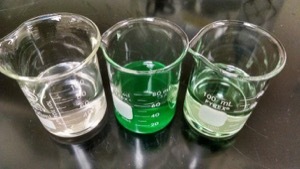 Effective Use and Application of Winter Roadway Maintenance Materials Enhancers
Effective Use and Application of Winter Roadway Maintenance Materials Enhancers
Pennsylvania Department of Transportation Report 2015-009
This project evaluated the performance and environmental impacts of four winter maintenance additives: AquaSalina, BEET HEET, GreenBlast, and Magic Minus Zero. The top performers were, in order, AquaSalina, GreenBlast, and Magic Minus Zero, although considering product cost the best value was Magic Minus Zero, followed by AquaSalina and GreenBlast. Based on chemical analysis and toxicity testing none of the products were expected to have significant negative environmental impacts, although special consideration may be needed for very small watersheds or watershed with existing water quality issues. Report.
[divider]
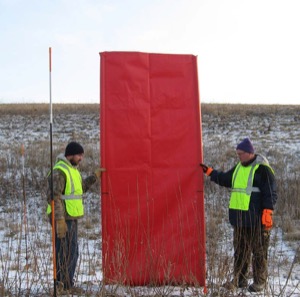 Assessing the Use of Shrub-Willows for Living Snow Fences in Minnesota
Assessing the Use of Shrub-Willows for Living Snow Fences in Minnesota
Minnesota DOT Report 2015-46
Shrub-willows have been successfully implemented as living snow fences in several states, with the potential of increasing participation in living snow fence programs because they are increasingly marketed as a biomass product for bioenergy production. This project tested different designs of willow living snow fences in Minnesota to evaluate their ability to trap snow, their growth, the cost of planting and the viability of biomass harvest. Researchers found that willows performed well as living snow fences, with the potential of trapping blowing snow within three or four years of planting, although harvesting for biomass may be appropriate only in very long transportation corridors. Report.
[divider]
 Trials of the Longevity of Brine and Pre-Wetted Salt on Typical UK Road Surfacings
Trials of the Longevity of Brine and Pre-Wetted Salt on Typical UK Road Surfacings
Transport Research Laboratory Report PPR757
This study evaluated how long salt brine and pre-wetted salt stayed on Scottish roadways. Salt brine showed better longevity than pre-wetted salt on hot rolled asphalt. On UK specification Proprietary Thin Surfacing (a surface similar to stone mastic asphalt), salt loss levels appeared to be equivalent for brine and pre-wetted salt. The data set was not large enough to extrapolate predictions of performance over a full winter season, however. Report. (registration required).
[divider]
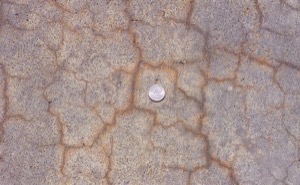 Winter Highway Maintenance Operations: Connecticut
Winter Highway Maintenance Operations: Connecticut
Connecticut DOT Report
This report analyzed the corrosive effects of deicing agents on Connecticut snow and ice equipment vehicles, state roadway infrastructure and the environment. It determined that literature had not documented the benefits of corrosion inhibitors in reducing corrosion to vehicles. The research also found mixed results as to the effectiveness of salt-neutralizing wash additives. To protect infrastructure, it recommended a program including low-permeability concretes for new bridge decks, use of sealers and crack sealers, proper concrete curing, a steel bridge painting program, bridge cleaning and corrosion-resistant bridge design. Report.
[divider]
